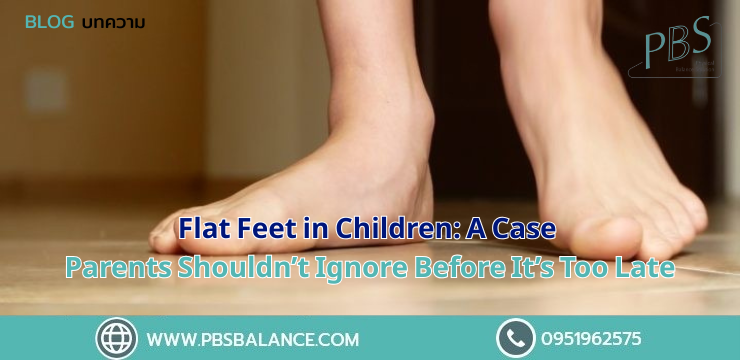
For any parent, seeing their child in pain—no matter the cause—can be heartbreaking. Many would gladly suffer in their child’s place if they could. But in reality, prevention and early intervention are the best ways to protect children’s health. One commonly overlooked condition in children is flat feet (pes planus). Parents who observe their child’s development closely from a young age can detect abnormalities early—before they interfere with daily activities or physical development.
Real-World Case of Pediatric Flat Feet
Flat feet in children are often due to genetic factors or natural anatomical variation. A noteworthy case involved an 18-year-old patient who sought care at PBS. Upon evaluation, the patient’s right heel exhibited a valgus tilt of 17 degrees, and the left heel tilted 11 degrees. Fortunately, the pelvis and shoulders remained level, which indicated no compensatory spinal imbalance.
However, gait observation revealed several abnormalities:
- The patient lifted the leg and swung it outward while walking.
- The step length was short, with toes splayed outward.
- The knees were close together, resembling a “knock-kneed” or duck-like gait.
- The foot lacked structural support, leading to poor toe alignment and difficulty in forward propulsion.
After walking only a short distance, the patient began to lose ankle mobility. This led to difficulty walking and the need to lift the foot more forcefully with each step. Although the patient attempted to walk normally, tightness and stiffness in the foot prevented proper movement, and a compensatory arm swing emerged as an unnatural adaptation.
How Flat Feet Affected the Patient’s Life
This structural foot abnormality severely impacted the patient’s quality of life:
- Participating in physical activities or sports with friends or siblings was extremely difficult.
- The altered gait and instability increased the risk of frequent ankle sprains.
- Over time, the condition contributed to the development of genu valgum (knock-knee), a deformity where the knees angle inward.
It’s important to understand that the musculoskeletal system is interconnected. When one bone, such as the heel, becomes misaligned, other bones compensate, which can lead to chronic biomechanical imbalances.
How to Detect Flat Feet in Children (and in Adults)
Parents—and individuals—can look out for early signs of flat feet using the following indicators:
- Frequent tripping or falling while walking
- Recurring ankle sprains, even with minimal physical activity
- Unexplained foot rolling during normal walking
- Uneven walking pattern, such as leaning to one side
- Knock-knee posture or duck-like gait
- Prominent big toe joint (bunion-like protrusion)
If these signs are observed, early intervention is crucial. Ignoring the symptoms can lead to long-term difficulties in mobility, posture, and balance.
At PBS, we offer professional evaluation and care for flat feet. Treatment options include:
- Custom-made orthotic insoles to support proper foot alignment
- Gait analysis and assessment by foot specialists
- Personalized care plans are designed to prevent deformities and restore comfort in daily life
With proper care, children with flat feet can regain their physical confidence and engage in activities just like their peers.
If you continue to experience persistent foot pain despite trying all natural treatment methods, consult a specialist promptly. At PBS, our team of foot care specialists provides services including custom orthotic insoles for plantar fasciitis and corrective devices for foot alignment. These solutions are personalized to treat the root cause and deliver the best possible outcomes.
Facebook: PBSofficial.TH
Line Official: @pbs.official
Source: